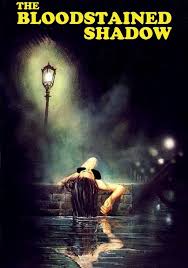
Stefano D’Archangelo (Lino Capolicchio) is a college professor who has returned to his hometown of Venice, Italy to visit his brother, Don Paolo (Craig Hill). Don Paolo is the priest of the local church. Don Paolo is up to his neck in sinners. There is the local pedophile, Count Pedrazzi (Massimo Serato), a fake medium, (Alina De Simone), the local midwife and illegal abortionist, Signora Nardi (Juliette Mayniel), and the wealthy local doctor, Dr. Aloisi (Sergio Mioni), who is also a gambler and was suspected of killing his wife.
Late that night, during a storm, Paolo witnesses the medium being strangled in the church’s courtyard. He doesn’t see the assailant’s face so he cannot identify the killer when questioned by the Police Commissioner (Alfredo Zammi). The police do note that the strangulation was similar to an event that happened when Stefano was a child. Paolo begins to receive threatening notes from the killer who thinks he can be identified by the priest.
In the meantime, Stefano meets and begins dating Sandra Sellani (Stefania Casini). Sandra and Stefano visit her stepmother (Laura Nucci). Sandra’s stepmother’s apartment walls are covered with paintings done by Sandra’s mother when she was alive. One of the paintings is of a woman and a pastoral scene. Something about the painting triggers a long-suppressed memory in Stefano but he can’t quite remember the event. Someone breaks into the apartment and steals the painting. The stepmother sees who the person is and is killed.
Soon after that, the members of a séance given by the medium are killed one by one. Stefano is convinced that the painting of the girl and his suppressed memories are connected, as are the murders, both past and current, and the threats to Paolo. As the murders continue, everyone’s secrets begin to be exposed.
“The Bloodstained shadow” AKA “Solamente nero” AKA “Only Blackness” was released in 1978 and was directed by Antonio Bido. It is an Italian horror mystery thriller and a giallo.
This was a pretty decent little film. It’s not the best giallo I’ve seen but there’s a lot of nice Venice atmosphere to add to the eeriness of the movie. The film came a little late to the genre, so it has most of the usual giallo tropes with some red herrings, unusual characters, and some varied and artistically created murder scenarios.
Usually, Venice is depicted as a romantic city. Here it is shown as once being opulent but is now a slowly crumbling shadow of what it used to be. Staging the film during winter gives it a stark and lonely vibe and adds to the mystery and horror unfolding on screen.

